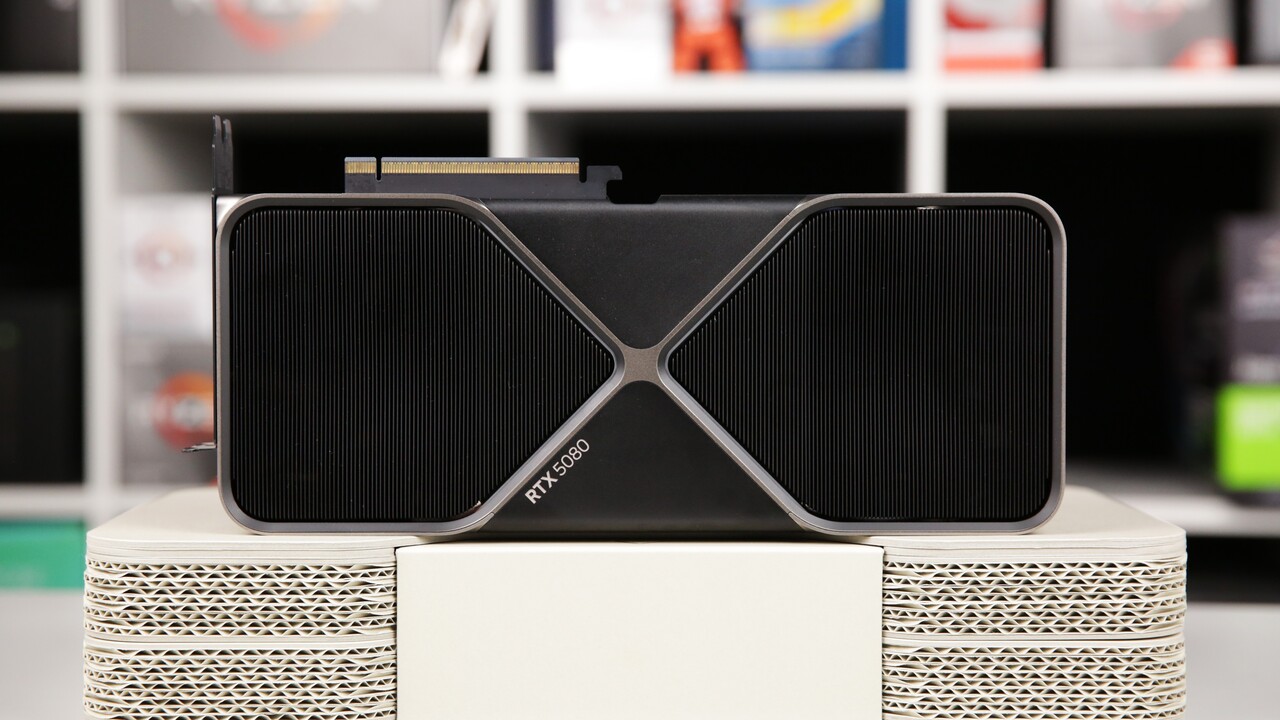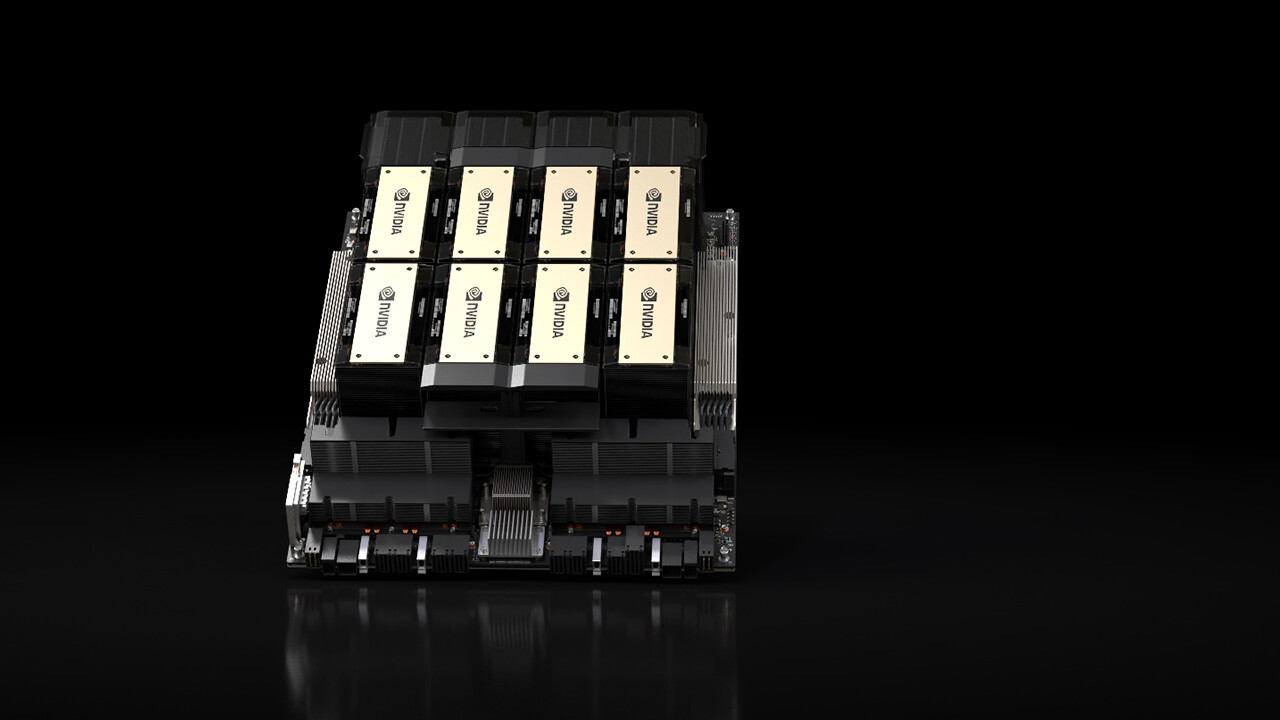Nvidia GeForce RTX 5080 OC: With 3.2 GHz, the jump in performance can be double 261 comments

The performance of the GeForce RTX 5080 Ex Works is thought-provoking, especially compared to the direct predecessor, the RTX 4080. The most surprised was the editorial team when the GB203 GPU turned out to be a little OC monster in the test: Overclocking by a whopping 453 MHz can double the performance jump to the predecessor in some games.
The content table with 3.2 GHz can be doubled. The RTX 5080 is weak on the chest with a fast OC was 3.2 GHz in games possible 13 percent more FPS are possible OC can double the RTX 4080 GeForce RTX 5080 – work under the SweepSpot?! The test for the GeForce RTX 5080 in the podcast
The RTX 5080 is weak on the chest Ex works
In the publishers’ UHD performance, the new GeForce RTX 5080 has just landed a good while ahead of the GeForce RTX 4080, with ray tracing the predecessor is even beaten by 9%. On the one hand, this is a historically low jump in generic comparison performance, which Nvidia Geforce has not yet had in 25 years. On the other hand, there is a huge gap between the GeForce RTX 5080 for the RRP of 1,169 Euro and at least 2,329 Euro GeForce RTX 5090 (test): the TOP model is a considerable 49% faster.
This enormous distance provides enough space for at least one additional graphics card, but one in the form of the GeForce RTX 4090 has been gradually disappearing from the market for months. At least one small remedy can create a remarkable property of the new GeForce RTX 5080, through which the editorial team stumbled in the test routine: the GB203 GPU on the test copy of the GeForce RTX 5080 Founders Edition has a very great OC potential. And much larger than what the GEFORCE RTX 5090 FE’s GB202 GPU showed when overclocking.
3.2 GHz in gaming was possible with fast OC
Usually the accompanying OC test for current graphics card tests is only a bit that gives marginal additional power in the low single-digit percentage range at the higher power consumption. With the GeForce RTX 5090, for example, 228 MHz was possible in the editors’ test more clock before falling. As a result, 3-6% more FPS with maximized power limit.
A surprisingly different picture shows itself today with the GeForce RTX 5080. Even with an overclock of around 453 MHz, the graphics card is still easily on the GPU test course. Compared to the average clock of 2,713 MHz shown in the test, this corresponds to a plus of 17%. But the 16GB GDDR7 memory can also be properly overclocked. A maximum frequency of 2,000 MHz can be set here – and they also ran. GDDR7 memory modules with 34 Gbps were the result. Memory bandwidth increases from 960 GB/s to 1,088 GB/s.
13% additional FPS is possible
How much the games top clock actually happens depends, among other things, on whether the power limit is reached or other factors that are previously unknown. If the power limit is transformed to the maximum of 390 watts, games with low requirements for the power limit like Final Fantasy XVI in UHD no longer clock with less than 2758 MHz, but a significantly higher 3197 MHz. This corresponds to an increase of 439 MHz in factory state. According to the telemetry, the total on-board power only goes from a low 218 watts to even low watts. The average FPS obtained shows an increase of 11%.
But what does it look like if the graphics card is already busier and, therefore, also gets more electricity? In Horizon Forbidden West, a game with average requirements for the power limit, the power consumption with OC is then 314 watts instead of 285 watts. The clock increases from 2,732 MHz to 3,164 MHz and the frame rate increases by at least 9%.
Space Marine 2, on the other hand, already has very high demands on the power limit with 337 watts, after overclocking it is 372 watts. The GPU clock rate increases from 2,647 MHz to 3,047 MHz and the speed improves by 13%, the best result in the short OC test.
It should be noted here that performance increases more than in relation to power consumption, here around 10% more Watts are in addition to 13% more FPS. Overclocking can therefore be useful on the GeForce RTX 5080 Founders Edition, especially because service consumption does not even increase proportionally.
OC can double the lead of the RTX 4080
The editorial team compiled the OC results with the GeForce RTX 5080 Founders Edition into a small OC Perforanancer. However, it should be noted that three games are not enough to paint a general picture of the average performance gain through overclocking. Three different scenarios have been deliberately chosen, which come to the graphics card with low, medium and high load. However, it’s still possible that other games will benefit less from the higher clock – or it may not be there at all.
In the three games tested, however, an average of 11% more FPS is possible. This means that the GEFORCE RTX 5080 can also tune much more than the GeForce RTX 4080, the advance is approximately twice as large with 25% instead of 12% in this significantly reduced course. GeForce RTX 4090 stays 14% faster, GeForce RTX 5090 creates 40% more FPS.
It is also restrictive that other graphics cards can also be overclocked in this comparison. Although the OC potential is generally significantly lower than that of the GeForce RTX 5080 and the additional performance usually has to be purchased with disproportionately increasing power consumption, but then the distances shift a little again.
GEFORCE RTX 5080 – EX works under the SweetSpot?!
The strong OC results also raise questions. Usually, NVIDIA and AMD have always specified their graphics cards for many years in such a way that buyers receive the highest performance even without manual attacks – if only because the respective GPUs in this way become stronger at higher cost of more chip area. With the GeForce RTX 5080, this is apparently not the case, especially since the graphics card is apparently positioned below its scan point, from which the ratio of power consumption and additional FPS is in decline. drop.
The reasons for this decision are unknown. Against the thesis that the clock rates obtained by the editorial team are an anomaly and that the GPU in the test model simply cuts well and moved, further tests of the GeForce RTX 5080 Fe, which certifies a potential OC comparable, as at AT AT AT AT AT AT AT AT TechPowerUp. 12% additional FPS is also possible there.
It cannot be ruled out that the GB203 GPU, which is not too large at 378 mm², gets a temperature problem much higher than 360 watts and Nvidia does not want to force it. Or that the graphics card was designed in an earlier phase of product planning for significantly higher clock rates at 3GHz. This would also explain the historically small jump with factory status. However, speculation in this regard will remain eternal – as recently with AMD’s rDNA 3.
The test for the GeForce RTX 5080 in the podcast
On the surprising OC performance of the GeForce RTX 5080, Jan and Fabian have already spoken in the Computer Basics podcast for the test of the new graphics card.
CB radio can not only be played via the Podigee player embedded in this article, but also subscribed to and heard directly in the podcast apps of your choice. The Computer Basics Podcast is available on Spotify, Apple Podcasts, Amazon Music and also on Deezer.
Themen: Geforce Geforce RTX 50 Geforce RTX 5080 Grafikkarten Nvidia nvidia Blackwell Overclocking

An engineer by training, Alexandre shares his knowledge on GPU performance for gaming and creation.


